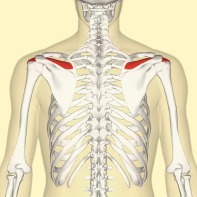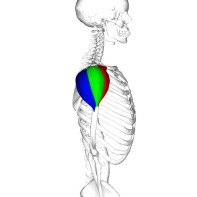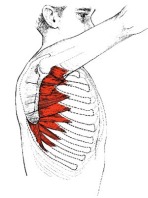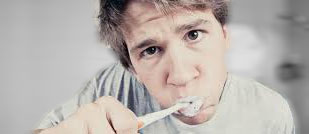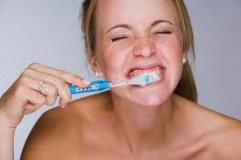Don’t think about it… Try lifting your arm sideways.
‘Recruiting’
Almost everyone will have involved both the shoulder & neck. Alexander Technique calls this ‘recruiting’ muscles – you are borrowing muscles which you don’t really need to do the job.
To lift your arm out sideways you actually only need 3 muscles:-
- Diagram 1: the Supraspinatus
- Diagram 2: the Deltoid (lateral fibres)
- Diagram 3: the Serratus Anterior
The Supraspinatus starts the sideways lift, maybe the first 30 degrees; the Deltoid then takes over until the arm is parallel to the floor. The final lift to the vertical is done by the Serratus Anterior.
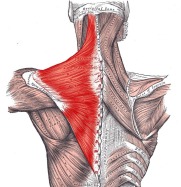 What most people do.
What most people do.
But most people use the Trapezius which has its origin in the neck at the mastoid process at the base of the skull.
So if you want to lift your shoulder this is a great muscle to use, but using it to lift the arms sideways or even forwards is a waste of energy.
The trouble is that we get used to it, and the ‘correct’ muscles don’t develop properly.
What does correctly lifting the arm sideways feel like?
If you put the middle of your palm on the angle of the opposite shoulder (where the arm joins the shoulder), and then lift the hand/arm sideways, you should feel a ‘hollow’ appear in the shoulder underneath your palm, as though the shoulder is sinking away from the palm. It should almost feel like a set of old-fashioned scales – the arm goes up, the shoulder goes down, and the ‘hollow’ deepens.
If you don’t feel this, there’s a fairly good chance that you’ve engaged a few extra muscles to do the job.
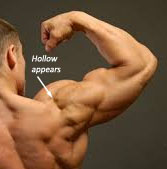 The ‘hollow’; what forms it?
The ‘hollow’; what forms it?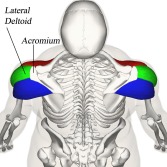
The slightly worrying picture on the left shows the ‘hollow’ that forms when you lift the arm sideways (abduct it).
The middle fibres of the deltoid (the lateral deltoid) are attached to the ‘Acromium‘ – which is the end of your shoulder-blade.
So when you abduct the arm, after the supraspinatus has done the initial 30 degrees or so of lift, the middle portion of the deltoid takes over.
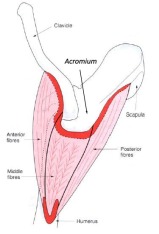 The 3 portions of the deltoid, front (‘anterior’ above in red), middle (‘lateral’ above in green), and rear (‘posterior’ above in blue) are in a horse-shoe shape, as shown in the diagram on the left.
The 3 portions of the deltoid, front (‘anterior’ above in red), middle (‘lateral’ above in green), and rear (‘posterior’ above in blue) are in a horse-shoe shape, as shown in the diagram on the left.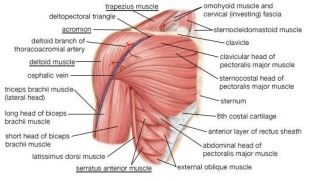
On lifting the arm beyond parallel to the floor, you start to feel the middle of that horse-shoe.
BUT, you don’t if the Trapezius, which lies on top of the shoulder, hasn’t relaxed.
And the final part of the lift to vertical.
Easy, you can feel this yourself. Put your opposite hand on the muscle – on your ribs, at the 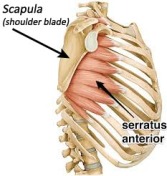 side of your body, below your arm. When you lift the arm from 90 degrees to 180 degrees, you can feel something going on under your hand.
side of your body, below your arm. When you lift the arm from 90 degrees to 180 degrees, you can feel something going on under your hand.
The muscle is tightening and pulling the lower corner of the shoulder-blade as if to pull it under your arm. This makes the final lift as it makes the acromium, which is part of the shoulder-blade, rotate further upwards.
Brushing your teeth/hair?
There are so many daily activities that we do where we keep reinforcing the incorrect use of certain muscles, and brushing your teeth is just one of them.
To the list you can add – brushing your hair, drinking, pointing at something … in fact, any action where we lift the hand as high as, or higher than the shoulder (and sometimes not even that high).
All you have to do is to spot when you do it!

